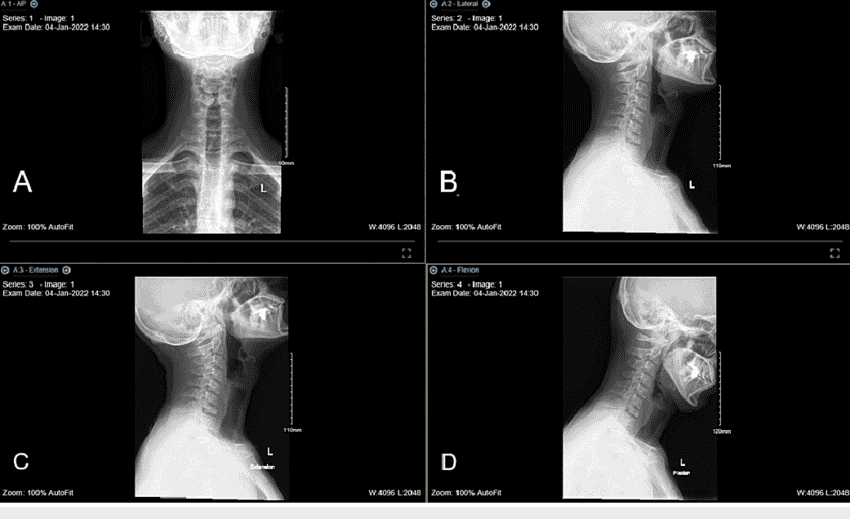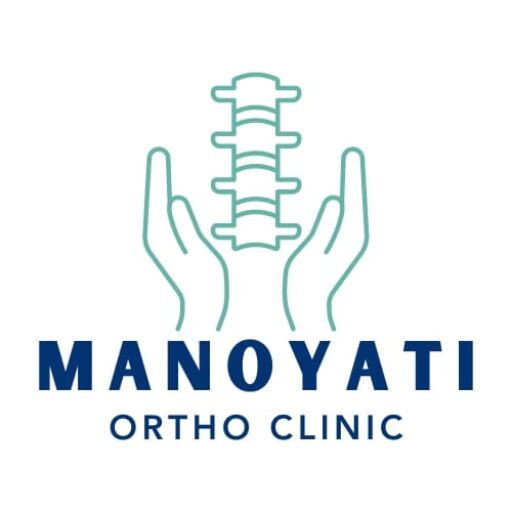Straightening of the Cervical Spine Treatment, Causes, and Symptoms Due to Muscle Spasm

Introduction
In today’s fast-paced, technology-driven world, neck pain has become a part of everyday life for many people. Whether it’s staring at computer screens for hours or scrolling through mobile phones endlessly, our lifestyle is contributing to an increase in spine-related issues. One common finding on neck X-rays today is “straightening of the cervical spine treatment.”
While this term might sound scary, it’s often related to a muscle spasm in the neck, which can usually be treated with the right care. If you’ve seen this phrase in an X-ray report and are wondering what it means, don’t worry, we’ll break it all down in simple terms. In this article, we’ll explore the causes, symptoms, diagnosis, and treatment of cervical spine straightening, and explain why expert help, like from the best spine specialist in Delhi NCR, can make a big difference.
What Is the Cervical Spine?
Start with the basics. The cervical spine is a medical term for part of the neck of your spine. It is made up of stacked, C1 to seven small bones (vertebrae) with stacked, C1 to C1. These bones protect your spine and support your head.
In a healthy person, the cervical spine makes a soft c-shaped curve when seen from the side. This natural curve is known as cervical Lordosis, and it helps to absorb shock and distribute weight equally.
What Does Straightening of the Cervical Spine Treatment Mean?
When your X-ray report mentions “straightening of the cervical spine treatment” or “loss of cervical lordosis,” it means that the normal C-shape of your neck has straightened out. This can be temporary or long-term, depending on the underlying cause.
Think of it like a spring that’s lost its natural bounce. A straight spine isn’t able to absorb shock efficiently, and it can lead to neck pain, stiffness, and other issues.
Quick Note: This condition doesn’t always mean you have a serious spine disease. Often, it’s the result of muscle spasms in the neck pulling the bones out of their natural position temporarily.
Causes: Muscle Spasm in the Neck
The most common cause of cervical spine straightening is a muscle spasm. A spasm is when your neck muscles contract or tighten suddenly, often as a protective mechanism.
Here’s why this happens:
- Poor Posture: Slouching at your desk or constantly looking down at your phone (a condition often called “text neck”) puts strain on your neck muscles.
- Injury or Whiplash: Car accidents, sports injuries, or sudden jerking motions can trigger spasms.
- Stress and Anxiety: Emotional stress can cause your muscles to tighten unconsciously.
- Sleeping Wrong: Poor pillow support or awkward sleeping positions.
- Repetitive Strain: Long hours at the computer without breaks.
These issues make your muscles tense up and pull on the bones of your neck, resulting in the spine straightening out.
Symptoms to Watch For
Straightening of the cervical spine may or may not come with symptoms. But when it does, here’s what you might feel and for straightening of the cervical spine treatment contact Dr. Manoj Kumar:
- Neck stiffness or tightness
- Reduced neck movement (you can’t turn your head easily)
- Pain in the shoulders or upper back
- Headaches, especially tension headaches
- Fatigue or heaviness in the neck
- Muscle tenderness on touching the back of the neck
Warning Signs (Red Flags):
If you experience any of the following, seek medical help urgently:
- Tingling or numbness in the arms or hands
- Weakness in the limbs
- Loss of coordination or balance
- Pain radiating down the arm
These may indicate nerve involvement or a more serious condition beyond simple muscle spasm.
Is It a Serious Condition?
In most cases, no, it is not serious. Strait due to muscle cramps is usually temporary and can be reversed with the correct treatment.
However, if it is ignored for a very long time or if degenerative disc disease is caused by underlying conditions such as herniated discs, or arthritis, it may require more advanced care.
Good news: Initial diagnosis and appropriate treatment can prevent complications. Most people recover well with non-surgical options such as physiotherapy, rest and posture improvement.
Diagnosis Process
When you go to a spine specialist, the diagnostic procedure usually includes:
Physical Examination
- The doctor evaluates your neck movement, asana and muscle stress.
- They can press at specific locations to determine pain sites.
X-ray
- Displays the alignment of your cervical spine.
- Identifies lack of cervical lordosis or straightening.
MRI Scan (if needed)
- Provides detailed images of discs, veins and soft tissues.
- If you have neurological symptoms such as tingling or weakness.
Seeing a spine expert ensures that the diagnosis is accurate and that no serious conditions are missed.
Treatment Options
Treatment depends on the cause and severity of the muscle spasm. Most cases improve without surgery.
Home Remedies
- Rest: The short duration of rest helps the muscles to relax.
- Warm compressed: A hot water bag can calm the stress of the muscles.
- Light stretching: Soft neck movements, once the pain decreases.
Medications
- Painkillers (NSAIDs): Help reduce inflammation and pain.
- Muscle relaxants: Relieve tight muscles.
- Topical creams: Provide local pain relief.
Physiotherapy
- Treatment’s most important component.
- The program includes posture correction, stretching exercises, neck strengthening, and electrotherapy.
- Ergonomic suggestions to improve desk habits.
Advanced Options (if needed)
- Trigger point injections: For severe, persistent spasms.
- Cervical traction: To gently relieve pressure on discs.
- Manual therapy: Performed by certified therapists.
Recovery Time: Most people feel better within 2–4 weeks, depending on how early they start treatment.
Prevention Tips
Here’s how you can prevent straightening of the cervical spine in the future:
- Maintain good posture: Sit upright, keep screens at eye level.
- Use proper desk ergonomics: Invest in an adjustable chair and desk.
- Take frequent breaks: Every 30–40 minutes, stand and stretch.
- Do neck exercises: Daily range-of-motion routines.
- Sleep right: Use a pillow that supports the neck’s natural curve.
- Manage stress: Yoga, meditation, or deep breathing to reduce muscle tension.
Consult the Best Spine Specialist in Delhi NCR – Dr. Manoj Kumar
If you’ve been dealing with persistent neck pain or muscle stiffness, it’s time to consult an expert. Dr. Manoj Kumar is widely recognized as one of the best spine specialists in Delhi.
With years of experience in treating cervical spine conditions, including muscle-related postural abnormalities and degenerative disorders, Dr. Manoj Kumar offers a full range of care, from conservative treatments to minimally invasive procedures.
Why Choose Dr. Manoj Kumar?
- Advanced diagnostic tools (X-ray, MRI, clinical assessment)
- Personalized treatment plans
- Expertise in both surgical and non-surgical spine care
- Patient-first approach and transparent communication
📍 Location: BLK Max Super Speciality Hospital, Pusa Road, Rajendra Palace, Delhi
📞 Contact: Book an appointment today for expert evaluation and compassionate care.
Whether it’s a simple muscle spasm or a complex cervical condition, Dr. Manoj Kumar helps you get back to living pain-free.
Common Questions People Ask
What causes loss of cervical lordosis?
The disadvantage of cervical Lordosis is usually caused by muscle cramps, poor posture, degenerative changes in injuries, or spine. It causes the natural C-vicious of the neck to straighten.
How long does a cervical muscle spasm last?
Most spasms resolve within a few days to two weeks with rest, medication, and physiotherapy. Chronic issues may take longer and need expert care.
Can straightening of the cervical spine cause headaches?
Yes. Muscle tension and nerve irritation due to straightening can lead to tension-type headaches, especially at the back of the head and temples.
Who is the best doctor for neck pain in Delhi NCR?
Dr. Manoj Kumar is one of the most trusted and experienced spine experts in Delhi NCR, known for treating postural problems with neck pain, cervical spine issues and a holistic and evidence-based approach.
Conclusion
Due to muscle spasms is a prevalent man-made problem in today’s decrepit world that’s why Straining the cervical spine Treatment. This may appear concerning on X-rays, but in most situations, it is just transitory and reversible with proper care.
Initial identity, good posture and personal medicine are important. Do not dismiss neck pain or stiffness as “normal”. If your symptoms remain, then talking with a top spine specialist in Delhi NCR, such as Dr. Manoj Kumar, can help you find proper treatment and avoid long -term losses.
Take action today: Contact Dr. Manoj Kumar clinic and start your journey toward a healthier spine.
